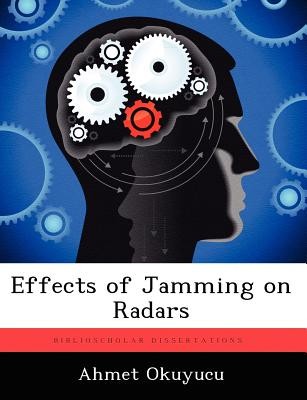
- We will send in 10–14 business days.
- Author: Ahmet Okuyucu
- Publisher: BiblioScholar
- ISBN-10: 1249593115
- ISBN-13: 9781249593119
- Format: 18.9 x 24.6 x 0.3 cm, softcover
- Language: English
- SAVE -10% with code: EXTRA
Reviews
Description
Although jamming of radar's has been in vogue for nearly 50 years there appears to be no comprehensive report on the subject matter. The purpose of this research is to fill this gap. The methodology consisted of analysis, simulation, and where feasible experimental demonstrations. Experimental equipment consisted of a digital noise generator whose output was used to modulate a high frequency carrier in various fashions. The modulated output was fed into a very sensitive super-heterodyne receiver whose Intermediate frequency (IF) bandwidth could be varied from tens of Hz to mega Hz range. The detected output was displayed on a sampling oscilloscope. The display was in turn digitized and stored to make hard copies for documentation purposes. There was enough flexibility in the equipment to make a wide variety of observations. Experiments showed that the victim receiver should have sufficient bandwidth to fully respond to the jamming signal. In the case of pure tone jamming, IF bandwidth requirements were minimal and any increase beyond the minimum did not improve jamming effectiveness. In case of pseudo random analog or digital noise, increasing the shift register sequence length and clock frequency made it more difficult for the receiver to recover the jamming waveform and identification. This implied inability to devise quick countermeasures. As follow-on to this research, more precise experiments involving FM by noise and random pulses are suggested.
EXTRA 10 % discount with code: EXTRA
The promotion ends in 20d.14:37:51
The discount code is valid when purchasing from 10 €. Discounts do not stack.
- Author: Ahmet Okuyucu
- Publisher: BiblioScholar
- ISBN-10: 1249593115
- ISBN-13: 9781249593119
- Format: 18.9 x 24.6 x 0.3 cm, softcover
- Language: English English
Although jamming of radar's has been in vogue for nearly 50 years there appears to be no comprehensive report on the subject matter. The purpose of this research is to fill this gap. The methodology consisted of analysis, simulation, and where feasible experimental demonstrations. Experimental equipment consisted of a digital noise generator whose output was used to modulate a high frequency carrier in various fashions. The modulated output was fed into a very sensitive super-heterodyne receiver whose Intermediate frequency (IF) bandwidth could be varied from tens of Hz to mega Hz range. The detected output was displayed on a sampling oscilloscope. The display was in turn digitized and stored to make hard copies for documentation purposes. There was enough flexibility in the equipment to make a wide variety of observations. Experiments showed that the victim receiver should have sufficient bandwidth to fully respond to the jamming signal. In the case of pure tone jamming, IF bandwidth requirements were minimal and any increase beyond the minimum did not improve jamming effectiveness. In case of pseudo random analog or digital noise, increasing the shift register sequence length and clock frequency made it more difficult for the receiver to recover the jamming waveform and identification. This implied inability to devise quick countermeasures. As follow-on to this research, more precise experiments involving FM by noise and random pulses are suggested.


Reviews